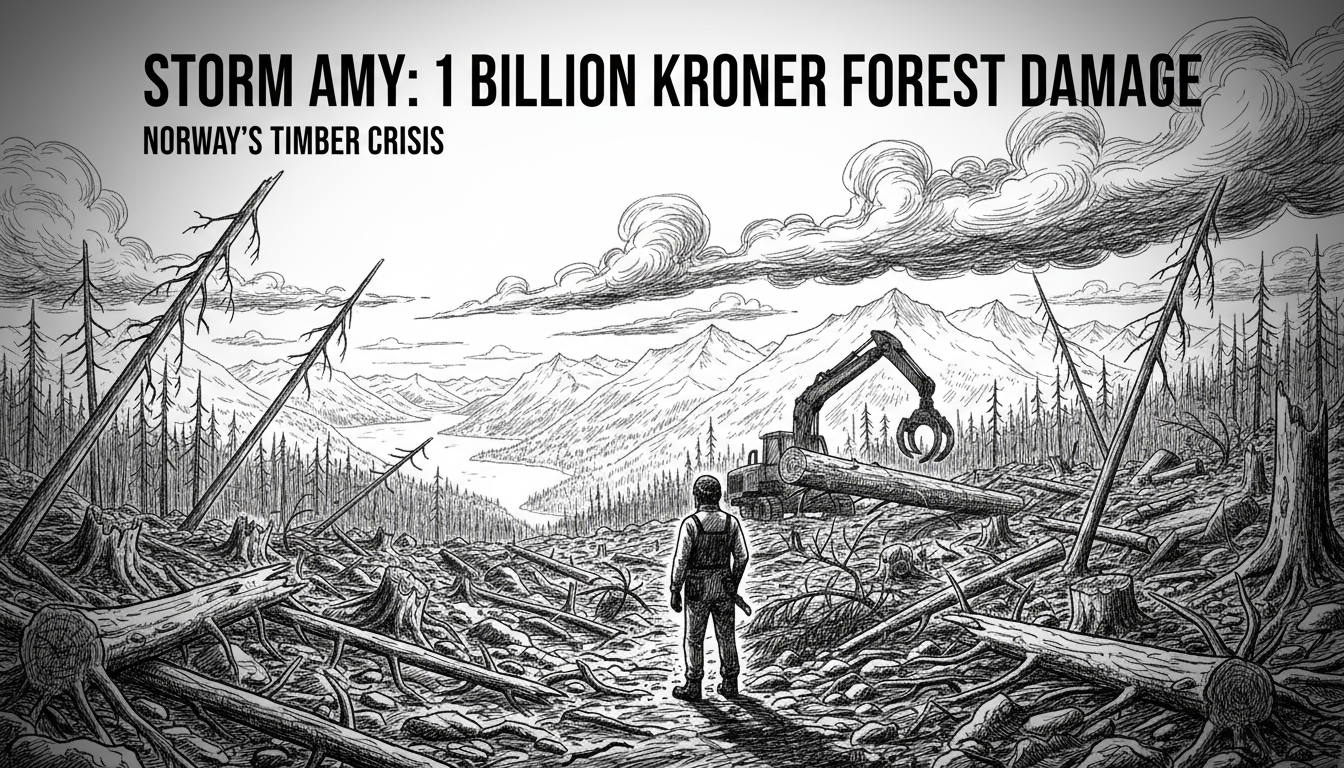Extreme weather system Amy has left Norwegian forests with catastrophic damage exceeding one billion kroner. The powerful October storm blew down approximately 1.5 million cubic meters of timber across multiple municipalities.
Insurance company Skogbrand Forsikring released these staggering figures in their initial assessment. The company has already received 600 damage reports from affected forest owners. They have evaluated about one-third of the damaged woodland so far.
Per Asbjørn Flugstad, the company's managing director, urged immediate action in a public statement. He said forest owners need to salvage the downed timber quickly. They should file insurance claims and contact timber buyers to organize cleanup operations.
The municipalities of Tingvoll, Orkland, Larvik, Bamble and Skien suffered the most severe impacts. These areas experienced the storm's full force, leaving valuable forestry assets scattered across the landscape.
This disaster represents one of the largest single weather-related losses to Norway's forestry sector in recent memory. The timing creates additional pressure for forest owners, as deteriorating weather conditions could further reduce the value of downed timber.
Norway's forestry industry contributes substantially to rural economies, particularly in affected regions. The massive scale of damage will likely affect local employment and processing facilities that depend on steady timber supply.
Insurance assessments will continue throughout the coming weeks. The final cost may increase as more comprehensive evaluations are completed. The situation highlights Norway's vulnerability to extreme weather events, which scientists predict may become more frequent due to climate change.
Forest owners face complex decisions about replanting and long-term management strategies. The Norwegian government typically provides support for such natural disasters, but the bureaucratic process can be slow compared to the urgent need for action.
What does this mean for international observers? It demonstrates how climate events can create billion-kroner impacts on Nordic economies within days. The Norwegian response will be closely watched by neighboring countries facing similar weather challenges.
The cleanup operation will require coordinated efforts between private landowners, insurance companies, and government agencies. The priority remains salvaging as much timber value as possible before winter conditions set in.

